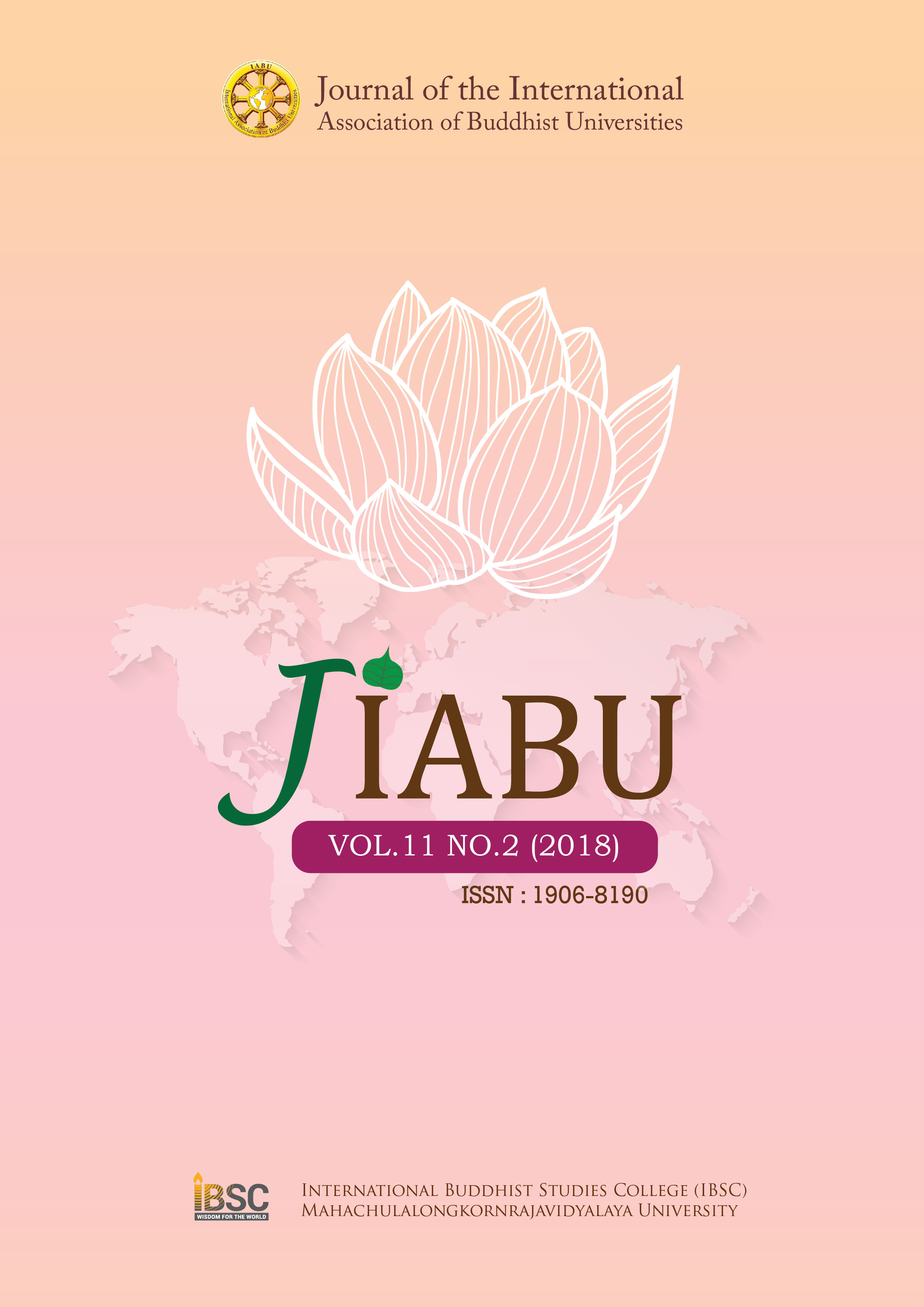A Comparative Study between Quantum Mechanics and Yogācāra Buddhism on Properties of Material Objects
Main Article Content
บทคัดย่อ
With the development of quantum mechanics, the knowledge of properties of
material objects have been greatly changed, quite different from what people have taken for
granted as well as that in classical physics. Since Yogācāra is considered to be one of
most compatible Buddhist theories with modern science, in order to see exactly how close
Yogācāra is to quantum mechanics, this article aims at comparing quantum mechanics and
Yogācāra on properties of material objects from three aspects, the source of material objects,
their substantiality, and the interference from the mind. By doing this, a conclusion is made
that the two have the same opinions at a general level but different, to certain extents, from each
other at a specific level.
Article Details
Views and opinions expressed in the articles published by The Journal of the International Association of Buddhist Universities (JIABU), are of responsibility by such authors but not the editors and do not necessarily reflect those of the editors.
เอกสารอ้างอิง
Center for Buddhist Translation Research, 1999.
Master Xuanzhuang. Cheng Weishi Lun (Discourse on the Perfection of Consciousness-only,
Chinese Edition). Tang Dynasty, China.
Master Xuanzhuang. Bashi Guiju Song (Stanzas on Regularity of the Eight Consciousnesses,
Chinese Edition). Tang Dynasty, China.
Master Kuiji. Cheng Weishi Lun Shuji (A Commentary to Discourse on the Perfection of
Consciousness-only, Chinese Edition). Tang Dynasty, China.
Vasubandhu, tr. Master Xuanzhuang. Weishi Sanshi Song (Triṃśikā-vijñaptimātratā, Chinese
Edition), India.
Vasubandhu, tr. Master Xuanzhuang. Dacheng Bai Fa Ming Men Lun (Mahāyāna-śatadharmaprakāśamukha-śāstra, Chinese Edition), India.
Hong Chaoji. Tu Jie Fojiao Ba Shi ( An Introduction to Eight Consciousnesses in Buddhism
with Illustrations, Chinese Edition). Taipei: Xiangshulin Wenhua, 2013.
Ismael, Jenann, “Quantum Mechanics”, The Stanford Encyclopedia of Philosophy (Spring
2015 Edition), Edward N. Zalta (ed.), URL =
Korman, Daniel Z., “Ordinary Objects”, The Stanford Encyclopedia of Philosophy (Spring
2016 Edition), Edward N. Zalta (ed.), URL =
Shun’ei, T. Living Yogācāra: An Introduction to Consciousness-Only Buddhism. Charles
Muller (tr.). Boston: Wisdom Publications, 2009.
Zhu, Q. “Physics Approaching Ālaya Consciousness (Chinese Edition)”. URL=
Zhu, Q. “Physics Stepping into Chan’s Status: Dependent Origination and Emptiness (Chinese
Edition)”. URL=
Zhu, Q. “Quantum Consciousness: the Conjunction of Modern Science and Buddhism (Chinese
Edition)”. URL=


